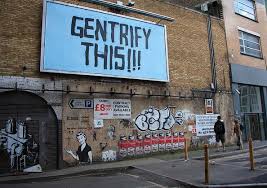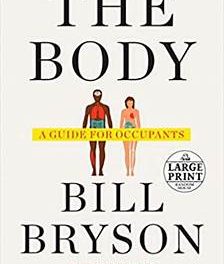In light of continuing concerns about gentrification in connection with Memphis 3.0, we are reposting this commentary from April 24, 2016:
Memphis should be so lucky as to have a gentrification problem.
If it did, it would indicate that people are moving back into Memphis core neighborhoods and that confidence in the city’s future is rising.
But while the “g word” gets more attention and attracts more angst, it’s the “p word” that deserves our focus and our concern – poverty, specifically, concentrated poverty.
For us, the gentrification map by Governing magazine underscored the absurdity of the level of alarm that’s sometimes brought to this issue. Its prime examples of gentrification in Memphis since 2000 include Uptown, a downtown area from Foote Homes to Shelby County Jail, EDGE/Medical Center, Soulsville, and Sherwood Forest. For 1990 to 2000, the prime example is Harbortown, which is hard to imagine as a gentrifying project since nothing was there before it was built.
It’s The Poverty, Stupid
It’s reminiscent of the academic paper a few months ago that concluded that the biking culture here was a contributor to inequality and gentrification. That article felt more than anything like a conclusion looking for a justification, referring hyperbolically to Memphis’s “bicycling boom” although bikers amount to about .2% of population and to the “massive increase in bicycling infrastructure…(which) contribute to racialized gentrification.”
Like Governing, the authors fundamentally misunderstood the data within the context of South Main’s revival and drew the assumption that if more people moved into South Main, they were displacing people with lower incomes.
In December, Joe Cortright’s City Observatory report looked at the 51 largest metro areas, including Memphis. He emailed: “We challenge frequently repeated narratives about the extent and impact of gentrification on urban poverty. Tracking change through shifts in poverty rates, the report shows that there have been remarkably few instances nationally of gentrification in which previously high poverty neighborhoods have seen their poverty drop to below the national average.
“Far more common has been the persistence and spread of concentrated poverty. Three-quarters of 1970 high poverty neighborhoods are still high poverty today. And the number of urban neighborhoods with poverty rates over 30 percent has tripled, and the number of poor living in these neighborhoods has doubled since 1970. This is alarming because a large and growing body of evidence confirms the devastating effects of living in and growing up in high poverty neighborhoods.”
Stability of Poverty Neighborhoods
In addition, his report spoke directly to the fallacies of the Governing article and the bicycle boom report with this comment: “It’s often argued and widely believed that the movement of higher income people into low income communities invariably produces one-for-one displacement of current poor residents. Our data show this gentrification narrative is misleading: precious few poor urban neighborhoods have rebounded, and those that have seen declines in poverty have recorded net increases in population. In contrast, high poverty neighborhoods that have seen declines in poverty have recorded net increases in population.”
As for Memphis, between 1970 and 2010, the number of high poverty neighborhoods climbed dramatically from 42 to 78 census tracts. Meanwhile, the population living in those census tracts increased from 93,712 to 104,140.
In other words, while the number of high poverty census tracts almost doubled – 87%, the population only increased 11%. It speaks to the historic level of migration out of Memphis neighborhoods, lured by the policies of county government that propelled sprawl and essentially required Memphians through their county taxes to pay for the decay of their own neighborhoods.
Massive Migration
Meanwhile, neighborhood infrastructure that was already paid for was abandoned as new roads and schools enticed more and more people from within the 1970 city limits of Memphis and county debt and maintenance costs climbed. In a presentation to Memphis City Council this week on plans to revive some inner city neighborhoods, architect Ray Brown pointed out that in the neighborhoods, 50% of the lots are now vacant and that doesn’t even include the houses that are vacant.
It speaks to the massive loss of property tax revenues in Memphis neighborhoods that took place as 169,827 people moved outside the 1970 city limits of Memphis between 1970 and 2013. In other words, the equivalent of the population of Chattanooga moved outside of the 1970 city limits of Memphis.
Here are the numbers: The population of 1970 Memphis was 619,757, but by 2013, the population within those 1970 city borders was 449,930, a decline of 27%.
Knowing that hindsight is 20-20, it’s hard not to see the absurdity of the lack of action that characterized an era when the core city was deteriorating in such a fundamental way, while being hypnotized by rhetoric that labeling new developments outside Memphis as “growth.” What we needed was a very specific strategy of interventions in neighborhoods that could make them more appealing for new investment.
It can be done now if we pick the neighborhoods where there are still core strengths and assets to build on and start there.
Memphis’s Fallen Stars
But we digress. Back to gentrification.
“The result of these trends is that the poor in the nation’s metropolitan areas are increasingly segregated into neighborhoods of concentrated poverty,” the City Observatory report said. “These high-poverty neighborhoods were not stable – in the aggregate, they lost population, with chronic high-poverty neighborhoods losing 40% of their population over four decades.”
In fact, the report said, the growth in the number of poor people in “fallen star” neighborhoods dwarfs the decrease in the poverty population in the “rebounding” neighborhoods.
Fallen star neighborhoods are census tracts with 15% or lower poverty rates in 1970 and 30% or greater in 2010. Memphis had 27 fallen star census tracts. Their population in 1970 was 7,581, but by 2010, it was 43,267.
Rebounding neighborhoods are census tracts with poverty rates of 30% or more in 1970 and which had poverty rates of 15% or lower in 2010. There were six of these census tracts, but their population had fallen from 5,069 to 1,722.
Mythic Memphis
Other economists like Mr. Cortright are confirming his conclusion: that there is no evidence that poor people moved out of gentrifying neighborhoods at a higher than normal rate. More to the point, gentrification, as defined by the displacement of low income African American families by well-off Caucasians, is essentially a myth. In fact, the socio-economic profile of a neighborhood is remarkably stable over time.
As one commentator said: “The problem isn’t so much that gentrification hurts black neighborhoods. It’s that it too often bypasses them.”
Or as Frayser Community Development Corporation head Steve Lockwood wrote in a March 6, 2015, Smart City Memphis blog post: “Yes, our problem is not gentrification. Our problem is that many of our neighborhoods are too cheap, not the other way around.”
About the City Observatory report, Brookings Institution wrote: “Gentrification certainly comes with attendant dangers for low-income families, which policy makers should be on guard against. But it comes with potential benefits too, so we should be careful about simply ‘protecting’ neighborhoods from the process. Policies and regulations that insulate impoverished neighborhoods from gentrification could end up condemning these communities to yet another generation of deep poverty and segregation.”
**
Join us at the Smart City Memphis Facebook page for daily articles, reports, and commentaries relevant to Memphis.





I always felt that gentrification was a good thing. Rising incomes in an area bring better stores and shops for the residents. The government actually improves infrastructure. Housing values rise — the most significant component of wealth for regular families. But I had worried that poor people were being forced out — good to find that research just doesn’t support that belief,